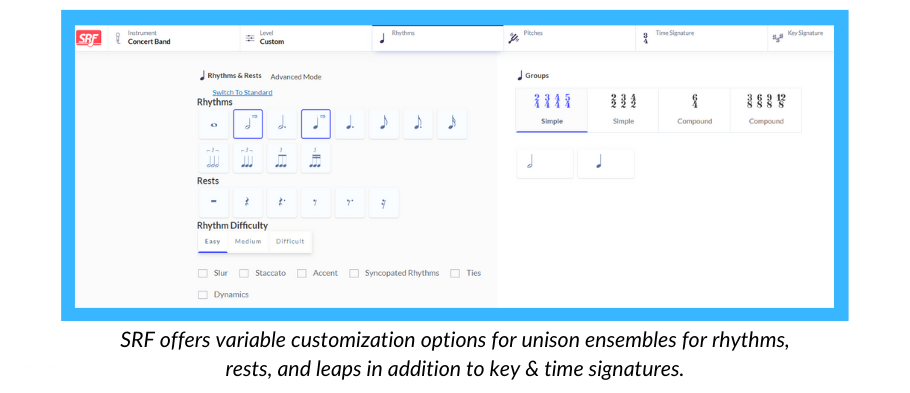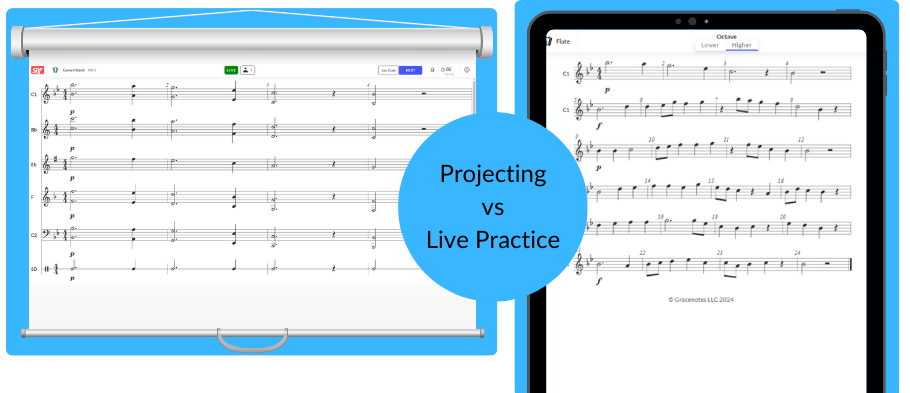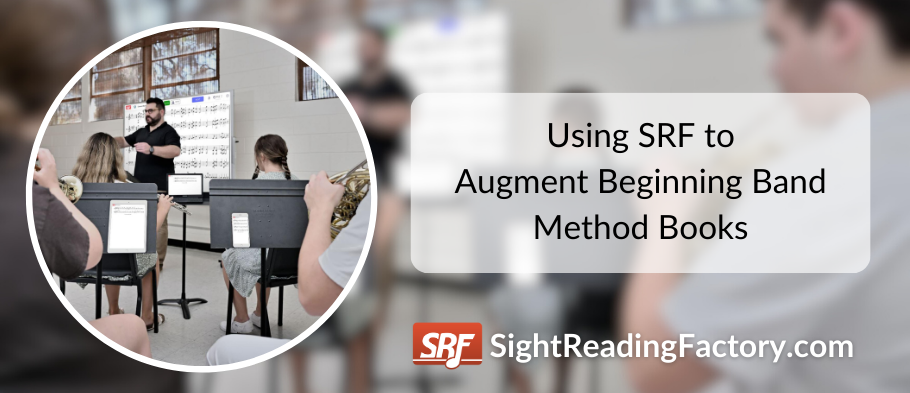Being a teacher for beginning band isn’t for the faint of heart! Before you can even think about your students performing their first piece of repertoire, you first have to teach them how to hold and play their instruments (and how to put them in their cases). Phew! Talk about daunting! And, once they learn to play their instrument successfully, then the grueling process of learning to read music begins.
Many band directors select method books to aid in this task. Method books are great for clearly explaining musical and instrument-specific concepts to band students. They proceed in a logical order and build upon each skill as the lessons move along. However, one downfall of method books is the lack of extra material to reinforce a concept with which students may be struggling. For example, there may be a page or two dedicated to exercises practicing those first initial skills of playing multiple notes in stepwise motion or small leaps, but the next concept jumps into larger leaps like a 5th or a 6th. While chronologically and conceptually, this is the next logical step, your students may be still struggling with negotiating smaller leaps.
While some teachers may have had years to build up their stash of additional reinforcement materials, not everyone has had that amount of time (or storage space) to do so. A platform like Sight Reading Factory can be a fabulous and convenient way to source unique material for your students’ needs.
SRF is an online sight reading platform designed to generate newly composed sight reading material based on your customized selections. While SRF does come with stock levels that can work to reinforce many concepts, even the most basic level can be customized down to time signature, key signature, and custom rhythms and leaps. As your students advance in skill, more complex elements can be added in such as ties, slurs, etc…

So back to utilizing SRF to augment your beginning band’s method books. Let’s look at a specific example of how this can be done. For the sake of this article, we used the Sound Innovations for Concert Band book as a basis for lesson progression.
Introduction of Stepwise Motion and Leaps: In Sound Innovations for Concert Band, by page 11 or so, your students have progressed from not playing anything to learning their sixth note (let’s say A in the key of C maj). The playing exercises thus far have consisted of mainly stepwise motion, ascending major 3rds, and a few descending 5ths and your students may be still struggling to consistently play those intervals. While it would be possible to ask your students to just go back over the exercises in the book, SRF can easily accommodate those parameters and provide fresh new exercises over and over without repeating the same thing they’ve already played. These exercises could be easily incorporated into your warm-ups, thus allowing you to hear and critique those developing skills while still freeing up your class time to move onto repertoire or new concepts. As your students progress, different note elements, like accidentals and minor keys, can also be specified.

Introduction of Rhythms and Meter By book 2 of Sound Innovations for Concert Band, students are being introduced to more complex rhythms and meters. The compound meter of 6/8 makes its first appearance as well as dotted eighth notes and triplets. These can often be tricky for younger students. Sight Reading Factory’s flexible customization lets you generate exercises with these specific rhythms, not only for instrumental playing, but also for rhythm-only counting exercises, and provides the perfect resource for practicing these important skills. By giving your students the time to master these elements solidly, your ensembles will be able to confidently tackle trickier repertoire and play it successfully in less time.
Ensemble Exercises You may be wondering how this all works for a class of young students with multiple instruments! All Sight Reading Factory exercises can be generated for specific instruments, let’s say the clarinets, to work on as a section, or as a whole ensemble in multi-part or unison. Just adding 5 minutes of these exercises into your beginning of class routine can help your groups not only practice and develop the skills that are giving them trouble, but also provide an opportunity for your students to practice those skills in the context of an ensemble rather than as an individual instrument.
Ensemble exercises can be large and sometimes create sight line issues if you are using a screen at the front of your room. Two ways to combat this issue is the reverse ensemble feature which will flip the score so that your percussion and low brass (or those who sit towards the back of the room) will be up high at the top of the exercise and your woodwinds (or those who sit in front) will be at the bottom of the screen. The other solution, especially if your students are equipped with one-to-one devices, is to employ the Live Practice feature (available with Student Accounts). This innovative feature casts each student’s part directly to their device.

Bonus If your students have Student Accounts and one-to-one devices, you can set up practice parameters for each of your classes under Assignments to reinforce these skills at home. Built-in practice logs allow you to track your students’ practice time and assignments can be recorded and sent to your dashboard directly.
Teaching beginning band is hard enough - there’s no need to make it harder! Offering your students the opportunity to practice tricky elements that parallel their method books will not only benefit your students, but your ensembles overall. Sight Reading Factory prides itself on the fact that it is easy to use, affordable, and accessible to every musician, even beginners. To find out more about Sight Reading Factory or to get a quote on adding Student Accounts for your ensembles, feel free to contact us.
Share this article